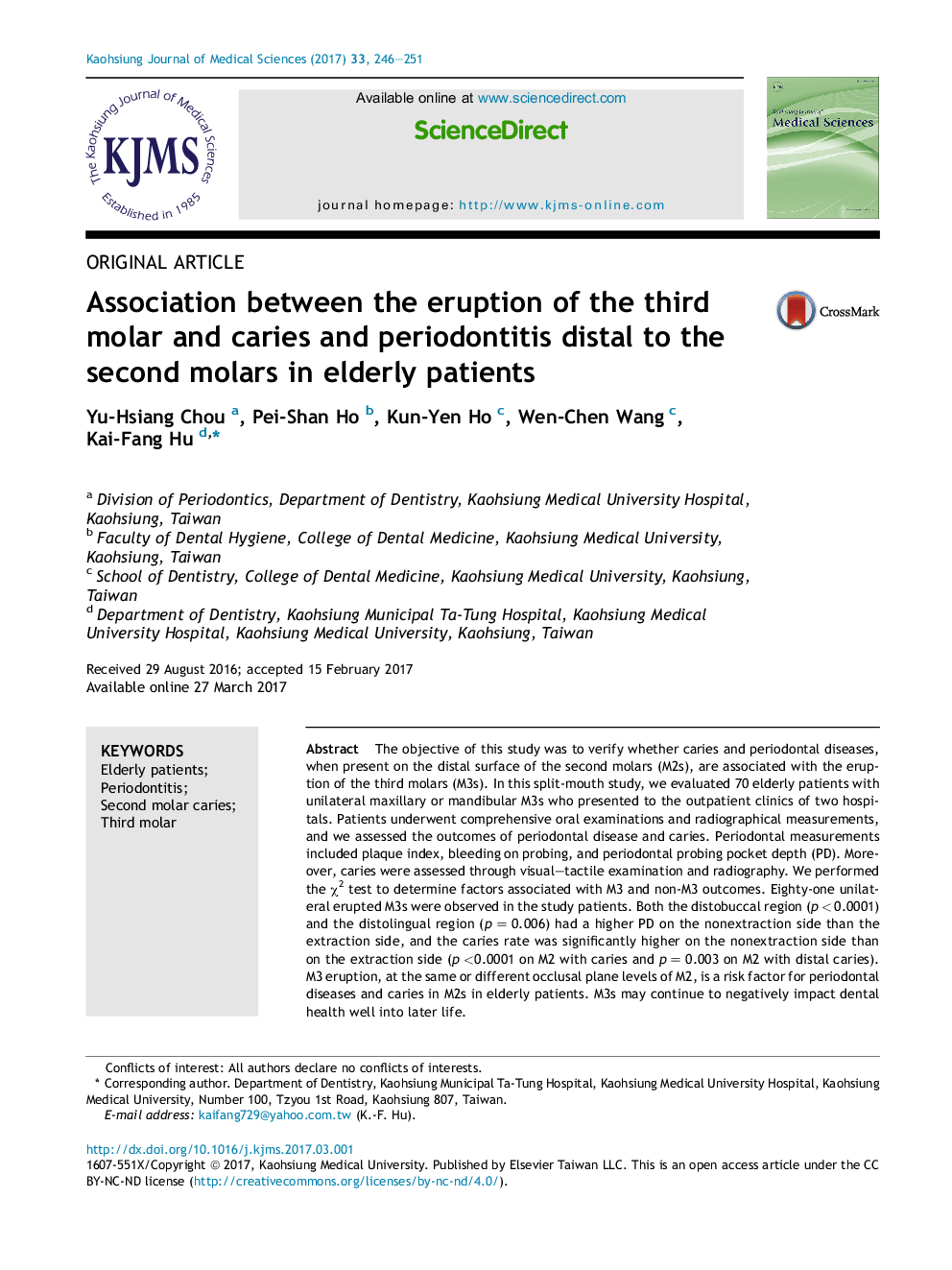| Article ID | Journal | Published Year | Pages | File Type |
|---|---|---|---|---|
| 5680311 | The Kaohsiung Journal of Medical Sciences | 2017 | 6 Pages |
The objective of this study was to verify whether caries and periodontal diseases, when present on the distal surface of the second molars (M2s), are associated with the eruption of the third molars (M3s). In this split-mouth study, we evaluated 70 elderly patients with unilateral maxillary or mandibular M3s who presented to the outpatient clinics of two hospitals. Patients underwent comprehensive oral examinations and radiographical measurements, and we assessed the outcomes of periodontal disease and caries. Periodontal measurements included plaque index, bleeding on probing, and periodontal probing pocket depth (PD). Moreover, caries were assessed through visual-tactile examination and radiography. We performed the Ï2 test to determine factors associated with M3 and non-M3 outcomes. Eighty-one unilateral erupted M3s were observed in the study patients. Both the distobuccal region (p < 0.0001) and the distolingual region (p = 0.006) had a higher PD on the nonextraction side than the extraction side, and the caries rate was significantly higher on the nonextraction side than on the extraction side (p <0.0001 on M2 with caries and p = 0.003 on M2 with distal caries). M3 eruption, at the same or different occlusal plane levels of M2, is a risk factor for periodontal diseases and caries in M2s in elderly patients. M3s may continue to negatively impact dental health well into later life.
